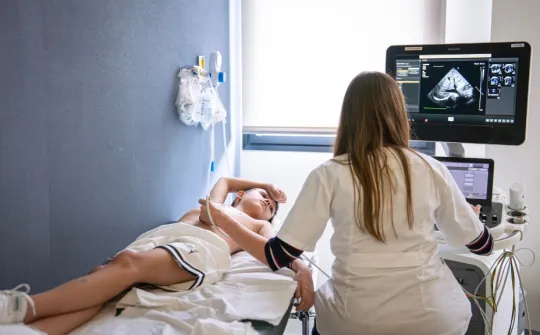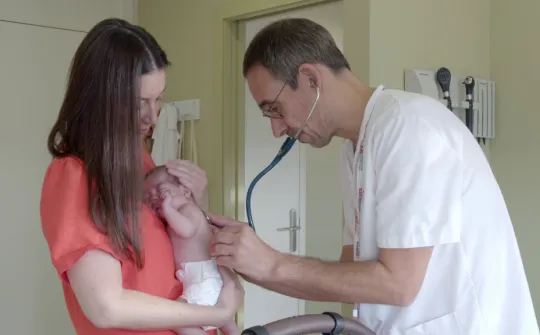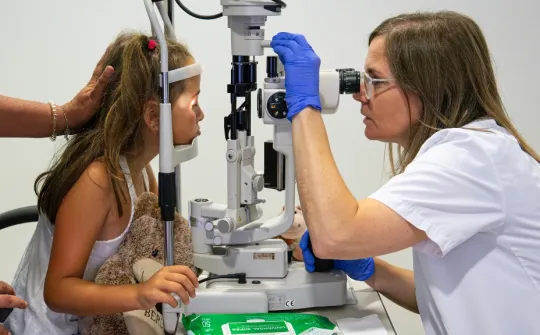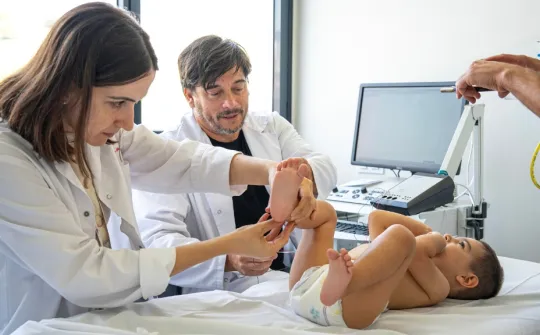“Interventional electrophysiology was a revolution. It allowed us to start curing many more patients with arrhythmia”
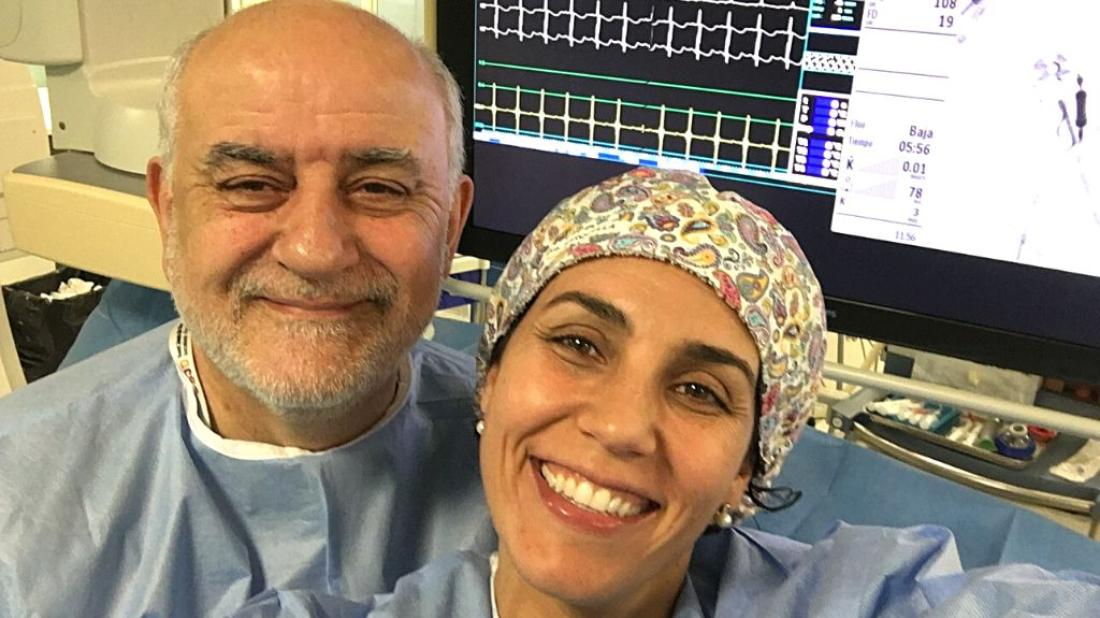
Josep Brugada and Geòrgia Sarquella, founder and coordinator, respectively, of the Arrhythmia Unit at the SJD Barcelona Children’s Hospital, tell us how cardiac ablation has improved patient outcomes over the last three decades
25 years ago, Cardiologist Josep Brugada founded the Arrhythmia Unit at the SJD Barcelona Children's Hospital, the first to be named a reference centre for arrhythmia treatment by the Spanish Ministry of Health. Both he and Geòrgia Sarquella, current Head of the unit, take a look back on the spectacular progress that has been made in treating cardiac rhythm disorders thanks to the appearance of interventional electrophysiology. “In the eighties, electrophysiology was only descriptive. It gave us lots of information for diagnosis, but not much else. We didn't cure anything”, explains Brugada. “This changed radically at the end of the eighties and start of the nineties, when interventional electrophysiology made an appearance.”
What did the arrival of these techniques mean for pediatric cardiology?
Josep Brugada (J.B.): It was a revolution. It changed lives: for both the patients we treated and the professionals who used them. Some patients had spent 40 years suffering with supraventricular tachycardia, often ending up at A&E because of episode after episode. When interventional electrophysiology appeared, we could start treating them. Our patients cried with happiness, they couldn't wrap their heads around it… That was where it all began. In November 1991, we founded the Arrhythmia Unit at Hospital Clínic Barcelona, which very quickly became a leading unit based on the huge volume of ablations we performed. In the 90s, we would do 700 or 800 ablations per year.
And almost straight away they wanted to extend this technique to the youngest patients.
J.B.: Yes, in 1995, cardiologists at the SJD Barcelona Children's Hospital started asking me to work with them on more complex arrhythmia cases in children. That is how we started doing ablation treatments on pediatric patients. At first these treatments were done at Hospital Clínic, but as requests and the need to visit admitted patients grew, we started performing the technique in the SJD Barcelona Children's Hospital facilities in 1998. At first, it was one day a week, then two, and so on until the SJD Barcelona Children's Hospital Arrhythmia Unit was born.
In 2002, a baby weighing only 1.54 kilogrammes was treated. He was the smallest baby in the world to receive ablation therapy.
J.B.: Yes, that case was a premature baby at 32 weeks with incessant tachycardia. That boy was in a precarious situation, but now he is 21 years old and in perfect health. Our success with that case made a lightbulb go off in our brains. It showed us that birth weight was no obstacle, and that we could perform ablations on children no matter how small they were. And so we did, much later, in 2019, when we operated on an even smaller baby girl. María was born with incessant tachycardia. She weighed only 1.31 kilogrammes and was just ten days old when we had to perform the ablation.
María was from Zaragoza. Was the SJD Barcelona Children's Hospital Arrhythmia Unit already a leading facility in Spain back then?
J.B.: Yes, a few years before that, in 2011, Geòrgia Sarquella joined our team. Thanks to her experience in Canada and Paris, she is the backbone of the unit, and is the one to thank for it reaching such unthinkable heights. Three years after she joined us, two fantastic things happened. On the one hand, the Ministry of Health granted us a CSUR accreditation in Pediatric Arrhythmia. We were the first centre to be awarded this accreditation, which made us so much busier because of the many patients arriving from all over Spain. The figures speak for themselves. As of 2022, we had performed more than 2,500 ablations, and of those, 8% were on children weighing under 10 kilos.
Geòrgia Sarquella (G.S.): Another hugely important event was in 2014, when we managed to vastly improve our technological offering. That year, we met with the Daniel Bravo Private Foundation because we needed 200,000 Euros to fund a research project on pediatric arrhythmia. Surprisingly, we walked out of that meeting with the Foundation's full support to help finance a new hemodynamics room in the Hospital. Thanks to their help, today we have one of the most modern interventional hemodynamics rooms in the country. Having facilities such as these allows us to carry out 3D-mapping and even cryoablation in complex cases. If there is any specialism where technology has drastically evolved in the last 15 years, it would be electrophysiology. We have gone from having almost no technology, to having almost every kind imaginable. Thanks to that donation, we have been able to implement the most current tech to make our job much easier.
How did this progress change clinical practice?
J.B.: We have always been driven to make things as easy as possible. The quicker an ablation is performed, the less risk there is of complications. Now we can perform an ablation in 25 minutes, from first needle insertion to removing the catheter. And we always use a catheter whenever possible. Studies have shown that it does not matter whether you use one catheter or two.
The SJD Barcelona Children's Hospital was the first facility to be recognised by the Ministry of Health as a reference centre for treating pediatric arrhythmia, but it is also a leading hospital in treatment to prevent sudden death.
J.B.: The first patient that was diagnosed with Brugada syndrome (a rare, but potentially life-threatening, type of arrhythmia that can cause sudden death) was a young boy, and the second was his sister, two years younger. That is why, in our unit, we focus on tending to families, on prevention and treatment.
So far we have spoken about healthcare, but this unit also carries out research.
J.B.: Yes, Geòrgia has really led the way in this field and has achieved an exponential increase in not only the production of scientific papers, but also their quality.
G.S.: We promote research on sudden death in the younger population and hereditary cardiopathies. At present, we are a leading centre in the field, both nationally and internationally. We lead the pediatric subdivision of the European Reference Network for Rare and Low Prevalence Complex Diseases of the Heart (ERN-GUARD-Heart).
You have been involved in the creation of several European guidelines on treating cardiac disease.
G.S.: Yes, in creating the guidelines for treating arrhythmia in particular. Right now, we are heading the creation of European guidelines on treating ultra-rare cardiac diseases. And at no point are we forgetting about our patients. One of the things we are most proud of is that the SADS patient association was created here at the SJD Barcelona Children's Hospital, an association that currently represents patients with heart diseases at the European Commission. We proceed hand in hand with our patients, but they are the ones who lead the way.
